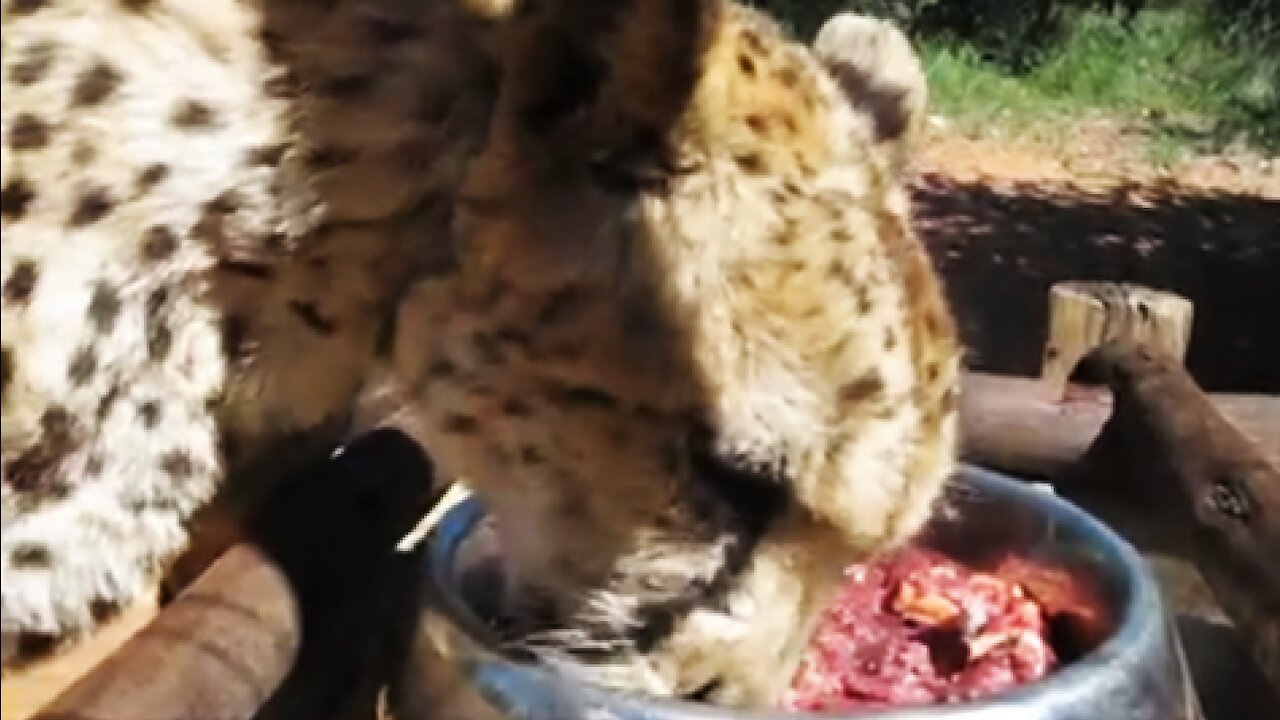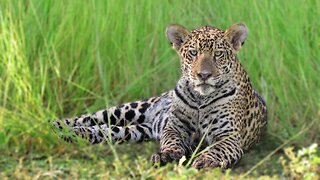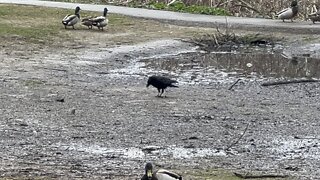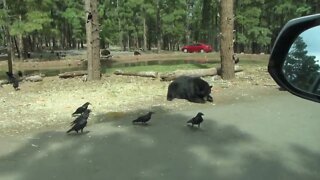Premium Only Content

Old rescued cheetah having lunch
This cheetah was rescued many years ago, and now, at old age, she barely has any teeth, so she needs to get chopped meat to be able to eat it. She is still very sweet most of the time and loves receiving visitors, longing for attention. She may not live in the wild, where she was supposed to be, but she got the best life she could!
The Cheetah (Acinonyx jubatus), is native to Africa and Asia, although it has been extirpated from nearly all of its Asian range. They could once be found from the shores of the Mediterranean and the Arabian Peninsula, west through central India, Pakistan, Afghanistan, Turkmenistan, Uzbekistan, and north to the northern shores of the Aral and Caspian Seas, but nowadays are limited to the central deserts of Iran. Although cheetahs still occur in several African countries, they now only occupy 10% of their historic range.
Five subspecies are recognized: Acinonyx jubatus hecki, in Northwest Africa; Acinonyx jubatus earsoni, in East Africa; Acinonyx jubatus jubatus, in Southern Africa; Acinonyx jubatus soemmerringi, in Northeast Africa; and Acinonyx jubatus venaticus, from Northern Africa to central India.
Cheetahs are classified as Vulnerable, although the subspecies Acinonyx jubatus venaticus and Acinonyx jubatus heckii are listed as Critically Endangered.
They can be found in dry forest, thick scrub, grassland and hyperarid deserts. They are only absent from montane and tropical forests.
Cheetahs are mostly known as the fastest land mammals, however, they are only able to sustain top speeds for a few hundred meters. If they don't succeed at their hunt by then, they need to give up and rest, otherwise they overheat.
Unlike other cat species, female cheetahs are solitary, accompanied only by their young, and males can be solitary or live in coalitions of two or three, usually consisting of brothers, but not necessarily.
-
 0:40
0:40
NataliaCara
1 year agoEncountering a beautiful jaguar cub in the wild!
1.21K2 -
 5:21
5:21
Gerry4Jesus
2 years agoPeep and having lunch
16 -
 1:09
1:09
Nature and Wildlife
2 years agoRavens having some lunch
10 -
 0:30
0:30
Travels of Epic Proportions
2 years agoBearizona | Bears having lunch
3 -
 LIVE
LIVE
Nerdrotic
4 hours ago $13.83 earnedWoke Killed Comedy, Hollywood Infighting, Girlboss Rohirrim | Friday Night Tights 330 w/ It'sAGundam
5,383 watching -
 LIVE
LIVE
Sarah Westall
3 hours agoARPANET and Who Really Invented Blockchain: Reconstructing Reality w/ Bryan Ferre
181 watching -
 UPCOMING
UPCOMING
LFA TV
20 hours agoObama Was Always the Divider in Chief | Trumpet Daily 11.29.24 7PM EST
2.49K -
 LIVE
LIVE
Quite Frankly
4 hours ago"Tony Black Friday & Thanksgiving Left-Overs" 11/29/24
156 watching -
 LIVE
LIVE
2 MIKES LIVE
1 hour ago2 MIKES LIVE #149 Open Mike Friday! Special guest Lance Caroselli!
59 watching -
 8:03
8:03
Colion Noir
2 hours agoFacebook Just Banned Smith & Wesson, Why Gun Owners Should Care?
9.67K13